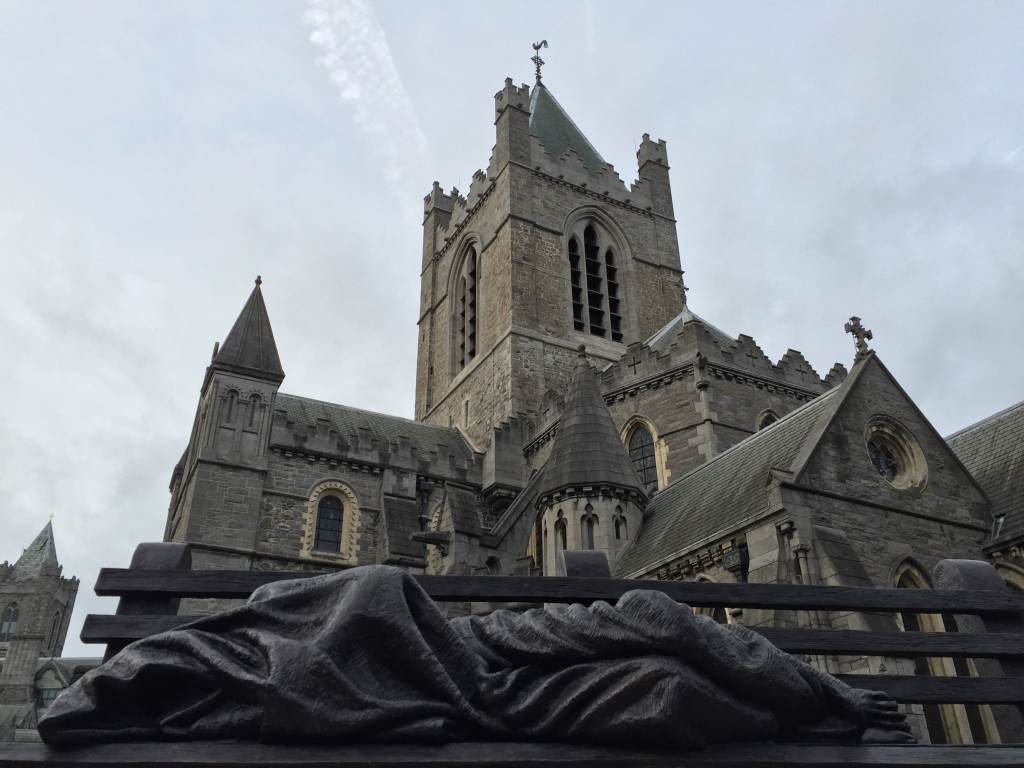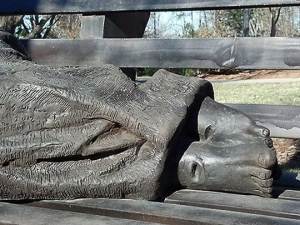This is an interesting recent addition to outdoor art in Dublin.
This ‘Homeless Jesus’ sculpture is in the grounds of Christ Church Cathedral. It’s by a Canadian artist, Timothy Schmalz, and was first installed at the University of Toronto. His name appears as ‘graffiti’ on the seat. Other casts of the work were commissioned for different locations in North America – and now Dublin has one.
In 2013, Pope Francis expressed his admiration for the work.
We feature it on our See Dublin by Bike tour.
It has had mixed reaction; there were views that, for one thing, it demeaned Jesus. One person who saw it in Dublin even asked, ‘why are they letting bums sleep in the church grounds?’. This kind of reaction probably only underpins the relevance of the work?
The Dean of the Cathedral, The Very Reverend Dermot Dunne, has this invitation on their website:
‘People have been coming to this place to worship God for nearly one thousand years. Irrespective of denomination, faith or non faith we welcome everyone as a pilgrim and it is our hope that as the pilgrim leaves, he or she will have been touched in some way by the love of God which shines in the beauty of this place.’
The cathedral was reconstructed by the Norman Archbishop of Dublin, John Comyn, between 1186 and 1200. It contains the remains of Strongbow, the Norman conqueror of Ireland and his wife Aoife, daughter of Dermott Mc Murrough, King of Leinster. It also contains a relic (the heart) of the 13th century Archbishop of Dublin, Saint Lawrence O’Toole (1161 – 1180). Up until the middle of the 18th century, Strongbow’s remains, still in the crypt, were a meeting point for the payment of bonds, rents and bills of exchange. George Edmund Street comprehensively restored the building between 1871 and 1878. The ruin to the left, just behind the Homeless Jesus, is the old Chapter House, not the original church of 1030, which doesn’t survive. Henry II attended Christmas services here in 1171, a year after his army conquered the city. It is said to be the first time that he took communion after the infamous murder of Thomas Becket by Henry’s knights.
The Bachall Íosa, the staff of Jesus, was probably the most famous of the cathedral’s relics. It was supposedly given to St.Patrick by Jesus Himself (impossible of course, as St.Patrick time was the 5th century). Its shrine was used for both worship and trade. The Bacall Íosa was destroyed in 1538, during the reformation period.
In the late 1970s Dublin Corporation (now called Dublin City Council), despite much protest, built their new offices over the site of the first Viking settlement just below the cathedral at Wood Quay, pouring concrete on what would have been a world heritage site.


